When people hear the words Vienna Secession they usually think of Gustav Klimt and his famous paintings. But there is much more to this artistic movement. It brought innovations to Austrian architecture, graphic arts, and furniture design. Grab a seat in the Curious Muse time machine and let's travel back to the end of the 19th century.
In 1897, a new artistic group was formed in Vienna. Its founding members included Joseph Maria Olbrich, Josef Hoffman, and Koloman Moser among others, while the famous Gustav Klimt was named the group's president. And the Vienna Secession was born!
These artists, designers, and architects wanted to bring new artistic trends to Austria. For inspiration, they turned to Western Europe. They looked at the art made by the French Impressionists, the German Jugendstil artists, and the English Pre-Raphaelites.
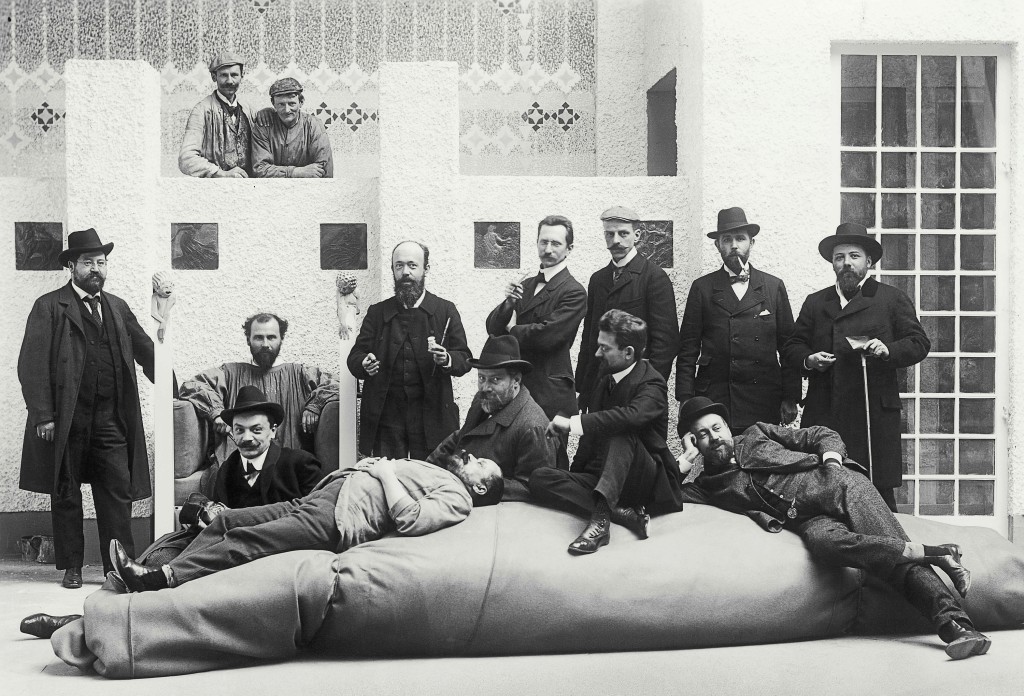
The artists of the Vienna Secession revolted against tradition and conservative ideas on art. They fiercely rejected historicism and they wanted to discover and represent the ideas of a new, modern man. In the words of another Secession member, the architect Otto Wagner, these artists aimed to show the modern man his true face.
The Vienna Secessionists believed that art should be everywhere, so they aimed to create something called Gesamtkunstwerk, or a total work of art that included every aspect of one's life. So, not just painting, but architecture, furniture, fabrics, ceramics, and glassware too.
The members of the Vienna Secession also founded a magazine called Ver Sacrum meaning sacred spring. Writers, poets, and designers were all featured in the magazine. For the first issue of Ver Sacrum, Klimt created a drawing named Nuda Veritas or The Naked Truth. In Nuda Veritas, the artist showed a woman holding up a mirror to the modern man. The magazine always aimed to promote the rebirth of the artistic scene in Vienna.
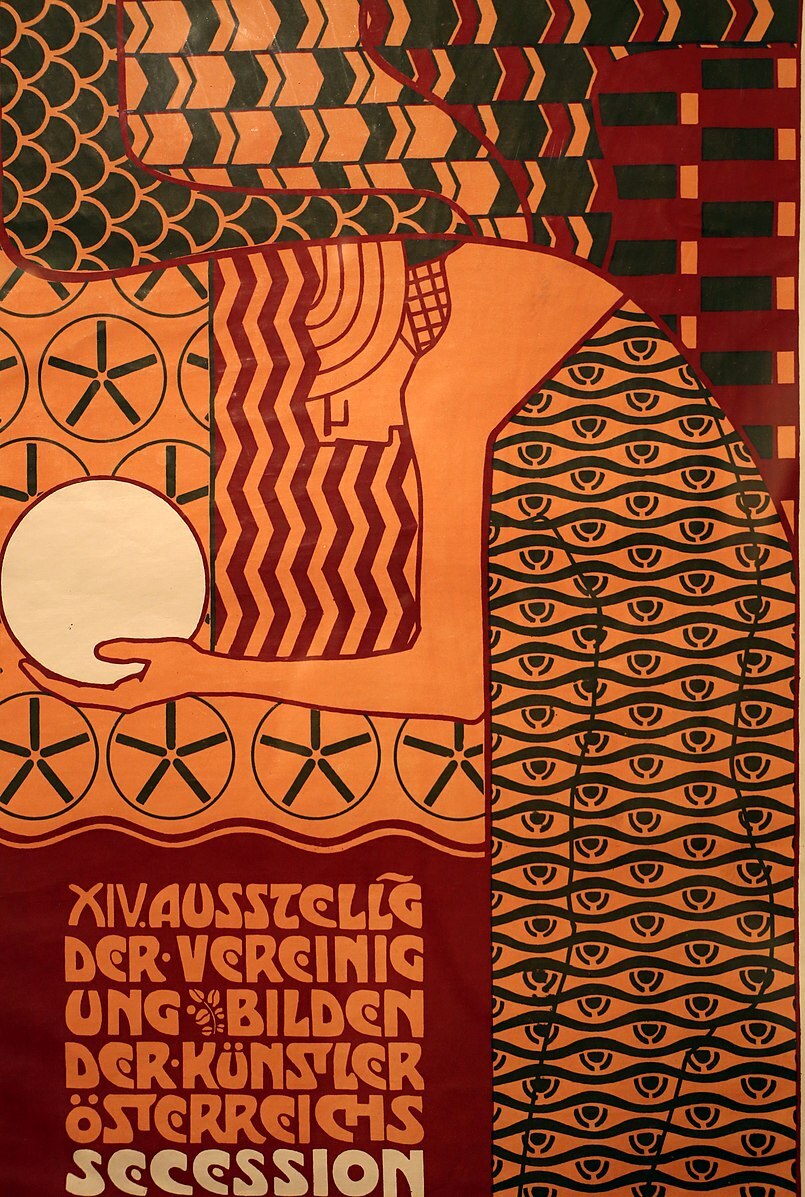
The group also became known for their exhibitions that were entirely dedicated to the art of the movement. Until 1905, 23 Secession exhibitions were held in total. For the first Vienna Secession exhibition, Klimt created a poster showing the myth of Theseus. The Austrian artist often used mythology and classical symbols as inspiration for his works of art.
All of the Secession exhibitions were held at the famous Secession building. The architect Josef Maria Olbrich designed the Secession’s main building that looks just like a temple. This way, art is presented as important as religion. This mesmerizing building has huge white walls, no windows, and a fascinating jewel on the roof: a sphere made out of big golden leaves that is also referred to as the golden cabbage. The philosophy of the movement is inscribed on the building itself: Der Zeit ihre Kunst/Der Kunst ihre Freiheit meaning To Each Age its Art/To Art its Freedom.
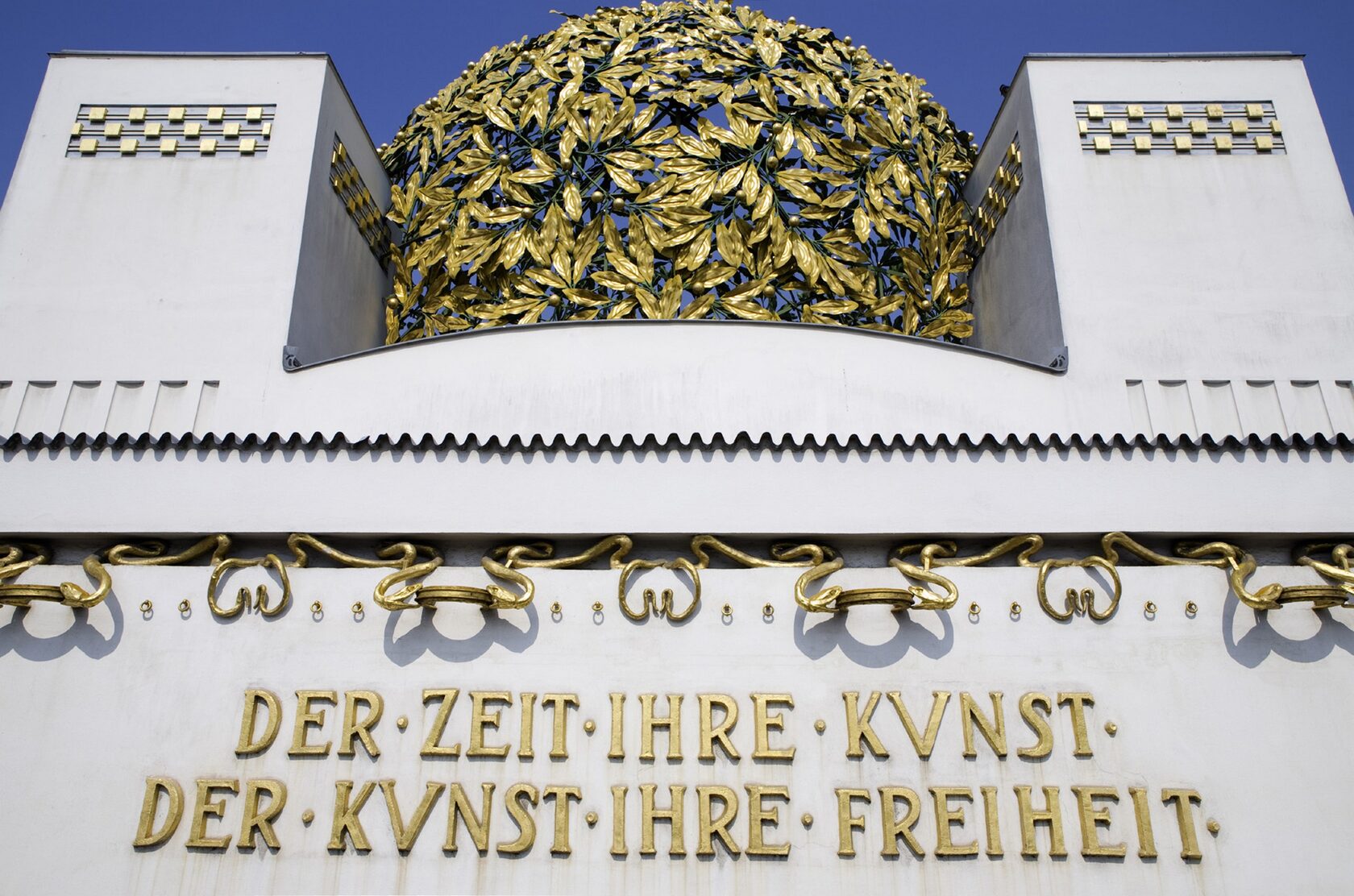
Inside the Secession building lies Klimt’s Beethoven frieze from 1901 that has many ornaments, golden details, mythical monsters with snakes for hair, and figures that represent death, evil, and grief, or on a lighter note: poetry and love, especially in the detail known as This Kiss to the Whole World. The piece celebrated Beethoven and his famous 9th symphony and Friedrich Schiller’s Ode to Joy.

Beethoven was seen as a misunderstood genius artist which the Secession artist liked to identify with and the Secession’s 14th exhibition was entirely devoted to the famous German composer.
Like in this frieze, the women Klimt painted often had long hair and looked almost like mythical beings and mermaids, erotic and sensual, they represented the femmes fatals that were dangerous to men like Judith or Salome. Klimt was representing the anxieties of modern men in a new world where gender relations were starting to change more and more.
Another architect affiliated with the movement, Otto Wagner, designed buildings in the Secession style. One of his famous works is known as the Majolikahouse. The gorgeous building has a facade entirely filled with colorful tiles with floral motifs designed by Alois Ludwig. During the time that we also known as the fin de siecle or the end of the century, Austria got its very own form of Art Nouveau in the Vienna Secession. Just like Art Nouveau, the Vienna Secession architectural style featured curvey lines, floral motifs, and organic ornamental designs. Wagner also designed an entrance to a train station known as Karlsplatz Stadtbahn Station. Golden, floral and geometrical motifs resemble those seen in the architecture of Art Nouveau. Now, that was a stylish way to use the subway! Today the eastern pavilion functions as a cafe and the western pavilion as an exhibition space.
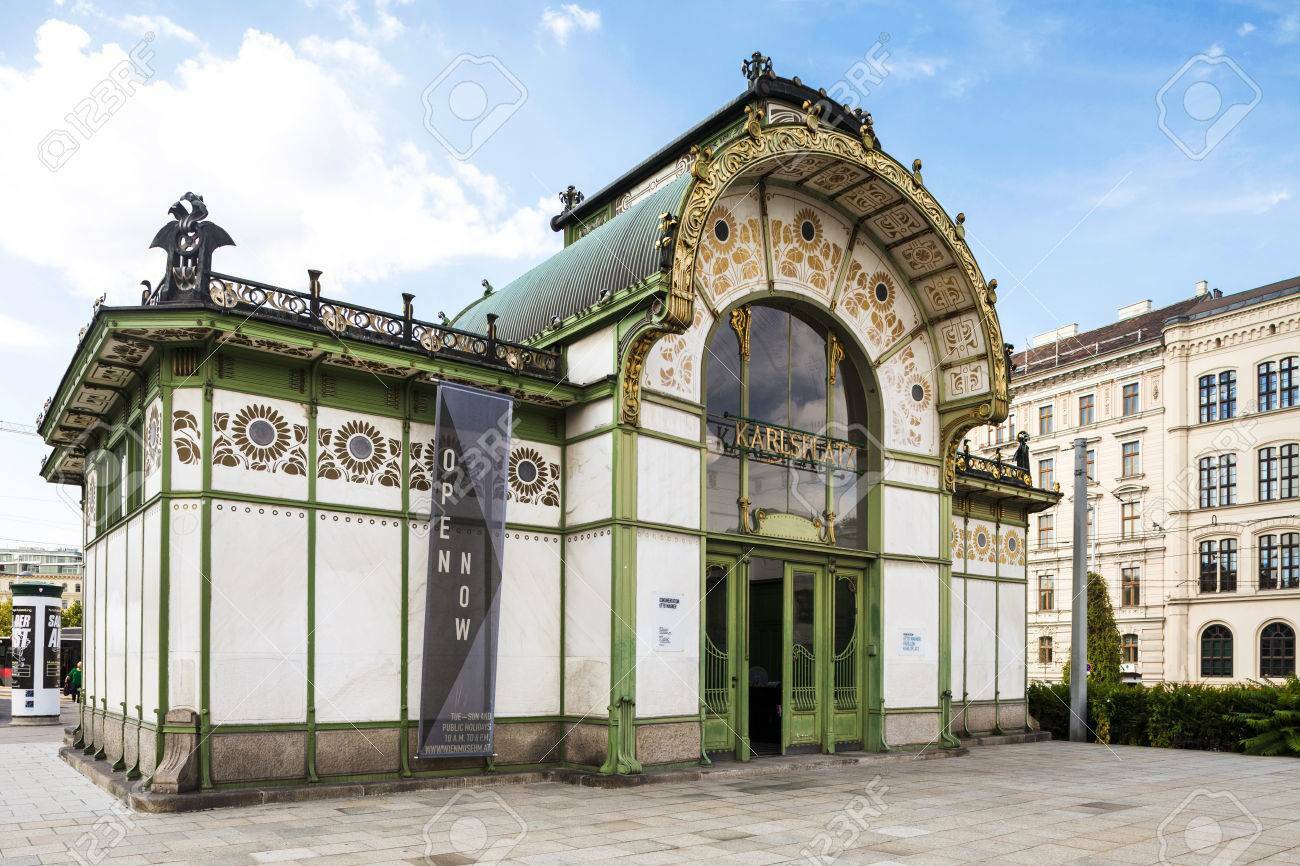
The 18th exhibition of the Vienna Secession was dedicated entirely to the works of Gustav Klimt. This was Klimt's first solo exhibition. Klimt, whose father was an engraver, entered the School of Arts and Crafts at the age of 14. In his early works, the artist showed a great talent for historical painting, and he painted the interiors of important buildings like the Burgtheater. Klimt even sneaked in an image of himself as a member of the audience here.
Klimt's best-known work is most definitely a painting called The Kiss and you've probably seen it a million times before on posters, t-shirts, or mugs. While the painting was made in 1908 after Klimt left the Secession group, the work still features a number of its core characteristics. The loving pair in the painting even resembles the one we see embracing in Klimt’s Beethoven frieze in the Secession building a bit. Klimt used real gold and real silver in this work and the ornamental design took center stage. The Kiss represents the crown jewel of Klimt’s golden phase which was influenced by his visit to Ravenna and the golden mosaics he saw in the San Vitale church while there.
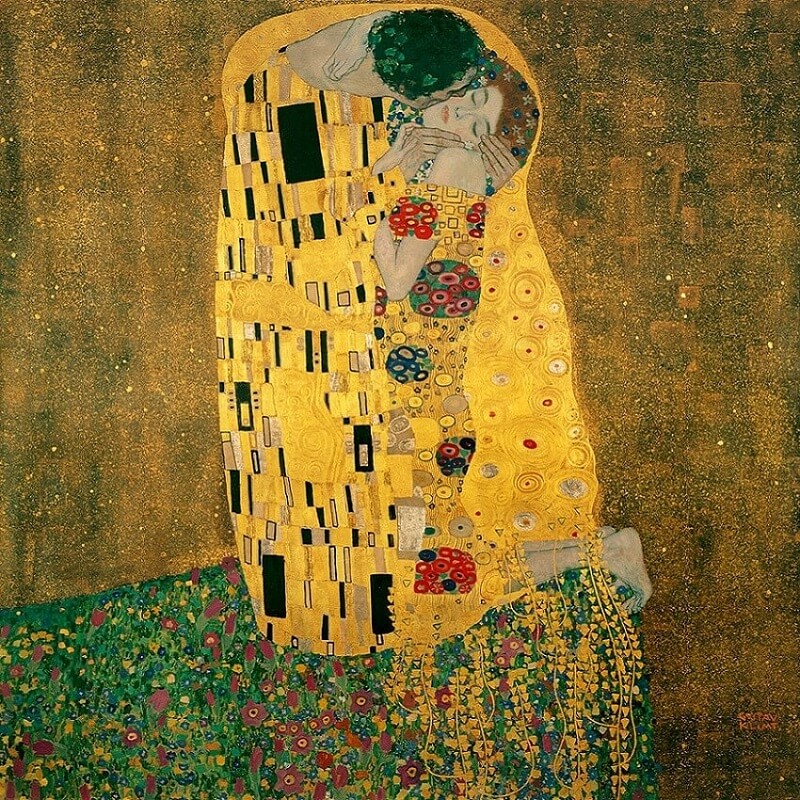
In 1903, Hoffman and Moser formed the Vienna Workshops, an association dedicated to creating utilitarian objects and crafts. And two years later, in 1905, Klimt left the Secession group. The Secession continued to exist but its impact grew smaller. Today, however, the Vienna Secession represents one of the most important eras of Austrian modern art. Tourists and art lovers enjoy visiting the Secession building, while pretty much everyone loves to look for Klimt’s alluring artworks in museums.
---------
Vienna Secession aimed to show that art could and should be a part of one’s everyday life. Looking at all these artworks of different kinds, can help us get a glimpse of what it was like to live in end-of-the-century Vienna.
